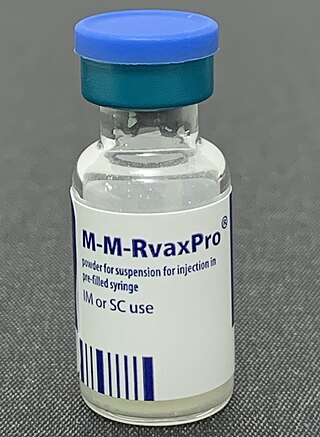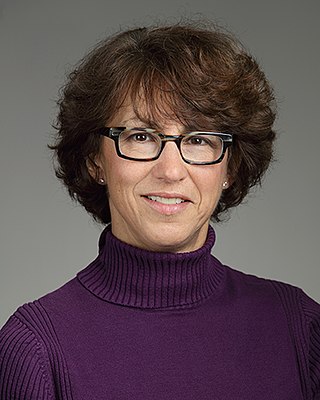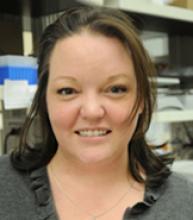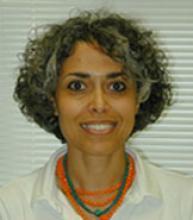
The National Institutes of Health, commonly referred to as NIH, is the primary agency of the United States government responsible for biomedical and public health research. It was founded in the late 1880s and is now part of the United States Department of Health and Human Services. Many NIH facilities are located in Bethesda, Maryland, and other nearby suburbs of the Washington metropolitan area, with other primary facilities in the Research Triangle Park in North Carolina and smaller satellite facilities located around the United States. The NIH conducts its own scientific research through the NIH Intramural Research Program (IRP) and provides major biomedical research funding to non-NIH research facilities through its Extramural Research Program.

A biosafety level (BSL), or pathogen/protection level, is a set of biocontainment precautions required to isolate dangerous biological agents in an enclosed laboratory facility. The levels of containment range from the lowest biosafety level 1 (BSL-1) to the highest at level 4 (BSL-4). In the United States, the Centers for Disease Control and Prevention (CDC) have specified these levels. In the European Union, the same biosafety levels are defined in a directive. In Canada the four levels are known as Containment Levels. Facilities with these designations are also sometimes given as P1 through P4, as in the term P3 laboratory.
The National Institute of Allergy and Infectious Diseases is one of the 27 institutes and centers that make up the National Institutes of Health (NIH), an agency of the United States Department of Health and Human Services (HHS). NIAID's mission is to conduct basic and applied research to better understand, treat, and prevent infectious, immunologic, and allergic diseases.

One use of the concept of biocontainment is related to laboratory biosafety and pertains to microbiology laboratories in which the physical containment of pathogenic organisms or agents is required, usually by isolation in environmentally and biologically secure cabinets or rooms, to prevent accidental infection of workers or release into the surrounding community during scientific research.

The Vaccine Research Center (VRC), is an intramural division of the National Institute of Allergy and Infectious Diseases (NIAID), part of the National Institutes of Health (NIH), US Department of Health and Human Services (HHS). The mission of the VRC is to discover and develop both vaccines and antibody-based products that target infectious diseases.

Rubella vaccine is a vaccine used to prevent rubella. Effectiveness begins about two weeks after a single dose and around 95% of people become immune. Countries with high rates of immunization no longer see cases of rubella or congenital rubella syndrome. When there is a low level of childhood immunization in a population it is possible for rates of congenital rubella to increase as more women make it to child-bearing age without either vaccination or exposure to the disease. Therefore, it is important for more than 80% of people to be vaccinated. By introducing rubella containing vaccines, rubella has been eradicated in 81 nations, as of mid-2020.
Bernard Moss is a virologist at the National Institute of Allergy and Infectious Diseases, part of the United States National Institutes of Health. He is the Chief of the NIAID Laboratory of Viral Diseases and of the NIAID Genetic Engineering Section. He is known for his work on poxviruses.
Mary K. Estes, Ph.D is a professor at Baylor College of Medicine in Houston, Texas. Her courses include microbiology, and virology; she is also the co-director of the Translational Biology and Molecular Medicine Graduate Program at Baylor College of Medicine. There are two main viruses that her research is based on, rotaviruses and noroviruses. The main goal of her research are to study how the viral proteins interact with the receptors of the intestinal cells; they are also looking into different ways to deliver virus-like particles to prevent these viruses from causing infections. Estes has achieved many awards and recognition in her time as a virologist. She is also a member of multiple foundations and professional societies.
Peter B. Jahrling is chief of the Emerging Viral Pathogens Section of the National Institute of Allergy and Infectious Diseases.

Carolina Barillas-Mury is the chair of the Mosquito Immunity and Vector Competence Section and Director of the Malaria Research Program at the National Institute of Allergy and Infectious Diseases of the National Institutes of Health. She studies how mosquitos transmit diseases like malaria, and in recognition of her research, she has been elected to the National Academy of Sciences.

Brian R. Murphy is an American virologist and former co-chief of the Laboratory of Infectious Diseases at the National Institute of Allergy and Infectious Disease.

Emily J. Erbelding is an American physician-scientist. She is the director of the Division of Microbiology and Infectious Diseases at the National Institute of Allergy and Infectious Diseases (NIAID). Erbelding was previously deputy director of the Division of AIDS at NIAID. She was a faculty member at Johns Hopkins School of Medicine and served as director of clinical services for the Baltimore City Health Department STD/HIV program.

Sonja Marie Best is an Australian-American virologist. She is chief of the innate immunity and pathogenesis section at the Rocky Mountain Laboratories. Best researches interactions between pathogenic viruses and the host immune response using flavivirus as a model.

Andrea Marzi is a German-American virologist. She is chief of the immunobiology and molecular virology unit at the Rocky Mountain Laboratories. Marzi investigates the pathogenesis of filoviruses and vaccine development. She received the Loeffler-Frosch medal in recognition of her research.

Kizzmekia "Kizzy" Shanta Corbett is an American viral immunologist. She is an Assistant Professor of Immunology and Infectious Diseases at Harvard T.H. Chan School of Public Health and the Shutzer Assistant Professor at the Harvard Radcliffe Institute since June 2021.

Nicole Amy Doria-Rose (born 1970) is an American biologist. She is chief of the humoral immunology core at the Vaccine Research Center. She develops and applies assays to evaluate HIV-1 specific antibody responses during natural infection and after immunization.

Catharine "Katy" Mans Bosio is an American biologist. She is a senior investigator and chief of the immunity to pulmonary pathogens section at the National Institute of Allergy and Infectious Diseases.

Vanessa M. Hirsch is a Canadian-American veterinary pathologist and scientist. She is a senior investigator and chief of the nonhuman primate virology section at the National Institute of Allergy and Infectious Diseases. Hirsch researches AIDS pathogenesis, the evolution and origins of primate lentiviruses, and HIV vaccine development.

Mary Elizabeth Daucher is an American biologist serving as the acting chief of the vaccine production program laboratory at Vaccine Research Center of the National Institute of Allergy and Infectious Diseases.

Fadila Bouamr is a French-American virologist researching the molecular mechanisms that govern the assembly and egress of an infectious HIV-1 and the proteins involved in these processes. She is chief of the viral budding unit at the National Institute of Allergy and Infectious Diseases.
















